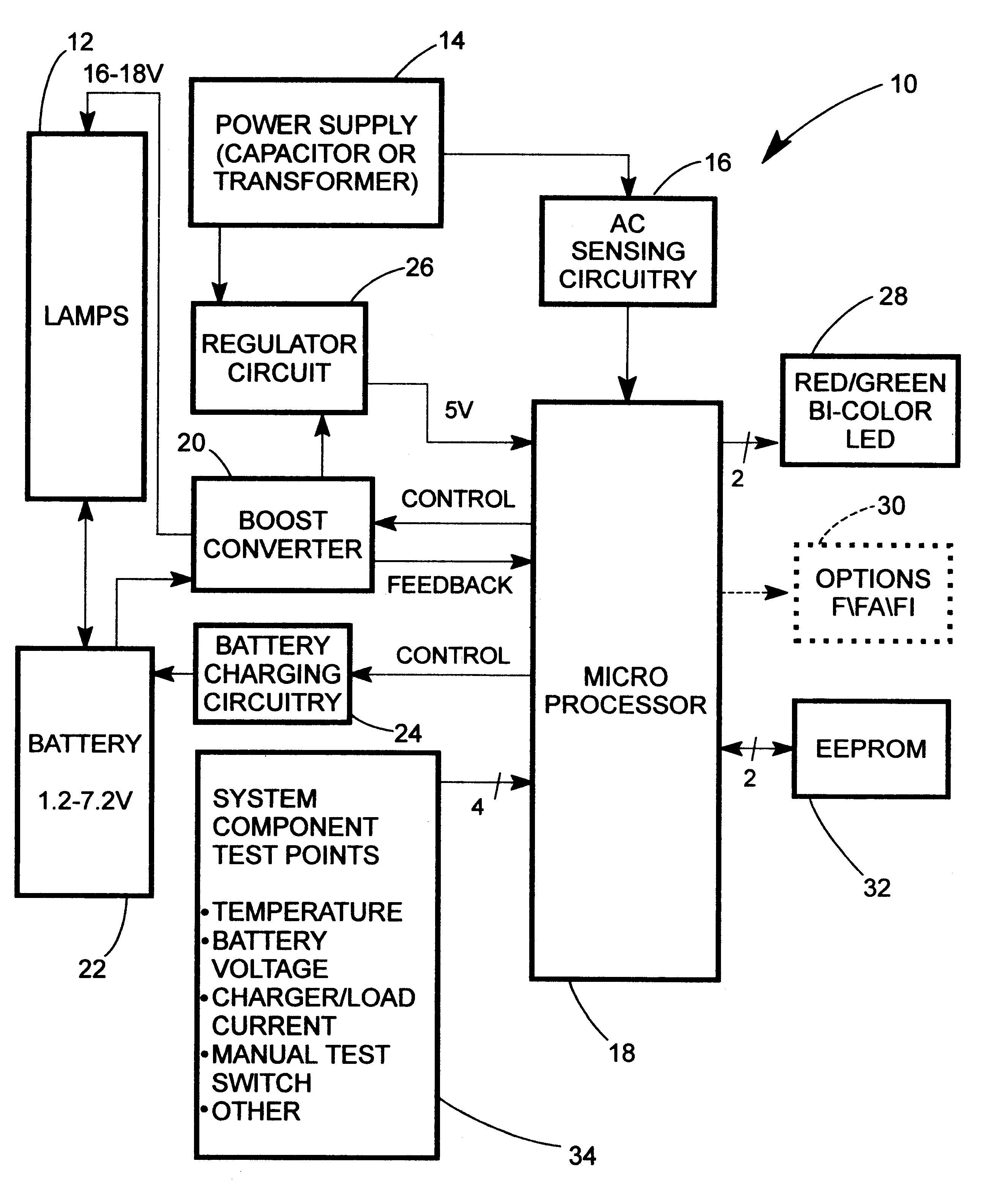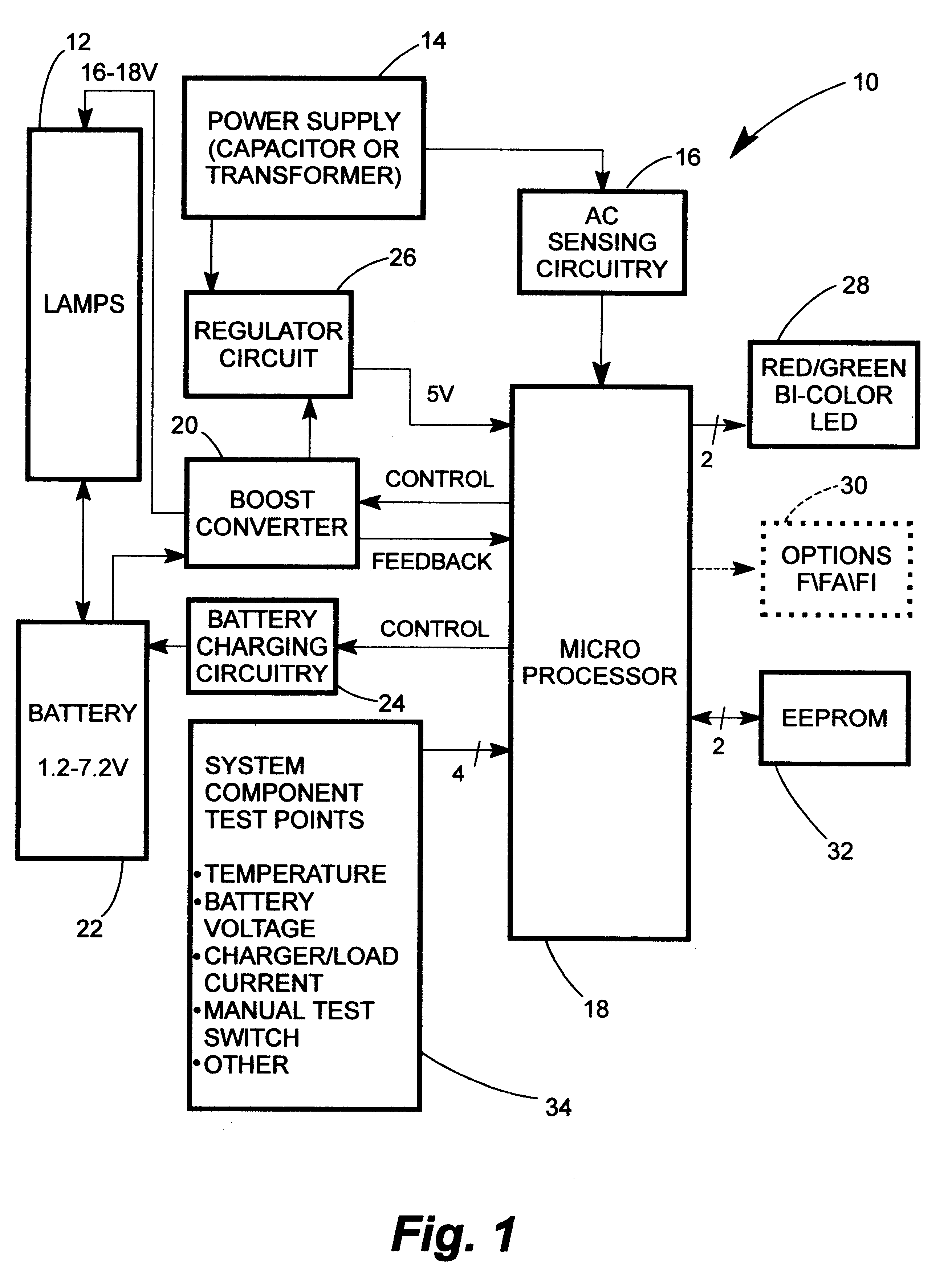Self-diagnostic circuitry for emergency lighting fixtures
a self-diagnostic circuit and emergency lighting technology, applied in the field can solve the problems of failure detection failure of testing procedures, and inability to detect the failure of emergency lighting systems, and achieve the effect of low power and low cos
- Summary
- Abstract
- Description
- Claims
- Application Information
AI Technical Summary
Benefits of technology
Problems solved by technology
Method used
Image
Examples
first embodiment
Referring now to the drawings, FIGS. 1 through 3 illustrate the invention as comprising an emergency lighting system seen generally at 10. In the system 10, lamping 12 preferably takes the form of an array of light emitting diodes arranged in series. The lamping 12 is operated under normal, non-emergency conditions through the power supply 14 which includes normal line voltage circuitry 16 for sensing the presence of AC line voltage being fed to the lamping 12 as an input signal fed to the circuitry 16 from the power supply 14, the circuitry 16 then feeding a signal to microprocessor 18. The microprocessor 18 controls boost converter 20 to supply power of reduced current to the lamping 12 on discontinuation of line voltage, voltage being supplied to the boost converter by means of battery 22. The microprocessor 18 also controls battery charging circuit 24 which shuts down on control by the microprocessor 18. The power supply 14 supplies power to regulator circuit 26 which supplies p...
second embodiment
Considering now the invention as is particularly shown in FIG. 5, it is to be noted that the differences between the circuitry of FIG. 5 and FIG. 3 are related as has been described hereinabove to basic load and battery chemistry considerations as exist between emergency exit signage utilizing light emitting diodes, requiring the circuitry of FIG. 3, and emergency unit equipment utilizing incandescent lamping, requiring the circuitry of FIG. 5. In the circuitry of FIG. 3, nickel / cadmium batteries are utilized as the emergency power source while lead-acid batteries are utilized with the circuitry of FIG. 5.
Much of the circuitry of FIG. 3 is incorporated into the circuitry of FIG. 5, particularly the microprocessor 18 and the EEPROM 32. Further, reset circuitry 120 is essentially identical as are the crystal clock 106 and the connector 108. D.C. local filtering at 152 is produced in a similar fashion and the pull-up resistors operate in a similar manner. The difference amplification f...
PUM
 Login to View More
Login to View More Abstract
Description
Claims
Application Information
 Login to View More
Login to View More - R&D
- Intellectual Property
- Life Sciences
- Materials
- Tech Scout
- Unparalleled Data Quality
- Higher Quality Content
- 60% Fewer Hallucinations
Browse by: Latest US Patents, China's latest patents, Technical Efficacy Thesaurus, Application Domain, Technology Topic, Popular Technical Reports.
© 2025 PatSnap. All rights reserved.Legal|Privacy policy|Modern Slavery Act Transparency Statement|Sitemap|About US| Contact US: help@patsnap.com



